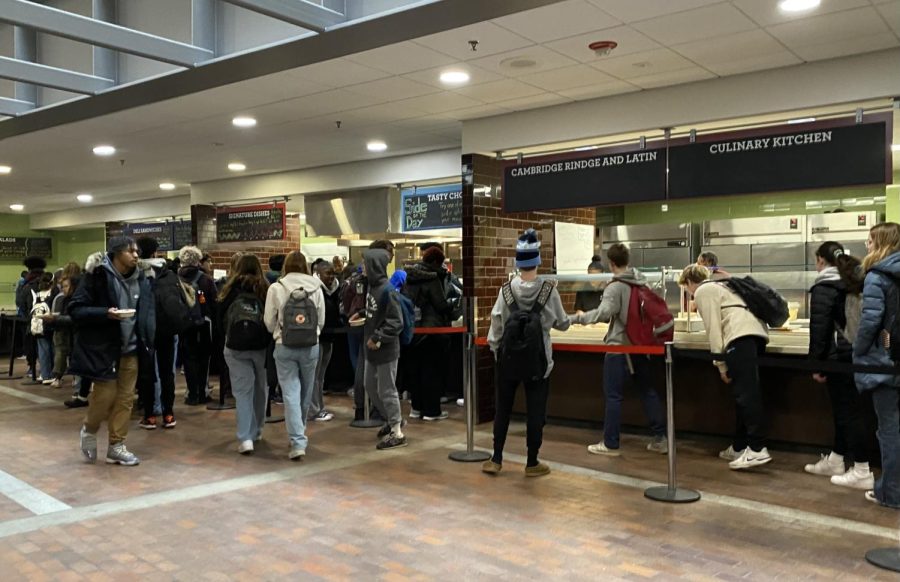Keeping CRLS Productive
January 23, 2023
Good food fuels success in the classroom and on the sports fields. It is well known that good nutrition is tied to concentration, productivity, and academic success. A typical CRLS student spends six and a half hours in the classroom everyday with up to four additional hours of sports, performing arts, or other after school programs. We are expected to perform well with fuel from only one serving during the school day.
This problem is not with the kitchen personnel; they are just trying to serve nearly two thousand students over a two hour period, as per the regulations of the school administration. Despite the dreariness of the students, the cafeteria chefs consistently make amazing meals and bring a joyful mood to the long school day. The issue is that students cannot get seconds at the cafeteria in order to properly fuel their bodies for the academics and athletics of the day. Some kids have lunch as early as 11:30 AM, leaving three plus hours of classes and possibly a total of about six hours until student athletes return home after practice and school. Valentin Siskind, a CRLS junior and cross country runner, told the Register Forum, “Not being able to get seconds at lunch is preventing a lot of people from being full for school and whatever they have after.” By not having seconds available Valentin professes that he is not ready to finish his school day, a problem that could be exacerbated by the timing of a student’s lunch. Another athlete, junior Tomas Alvarez-Saavedra, told the Register Forum, “Not getting seconds makes it harder to do my best at school and practice.” Tomas exemplifies the shortcomings of CRLS as they take from the potential of students and athletes as they represent the school.
The limited servings have forced me to supplement my meal with either a snack from home or a sandwich from one of the local stores, which is not possible for everyone of all socioeconomic backgrounds. This provides a nutritional advantage to students who have the means to buy food outside of what the school provides. Again, this issue could be solved by allowing students to receive a second serving, either for free or by implementing the previous school lunch system to make funding less of a problem. With the previous system, the school could raise funds for more food at lunch without endangering any family’s financial stability. Another strategy could be to provide a granola bar or other portable snack. This would allow students to eat during classes or before an early practice or game, as even those who can pay for an extra snack do not necessarily have time to buy food after their last period, leaving them hungry during extracurriculars.
As students lose focus, their productivity begins to wane; a problem that is solvable if the school were to take action and build on the already strong cafeteria by giving students sufficient servings.
This piece also appears in our December 2022 print edition.










